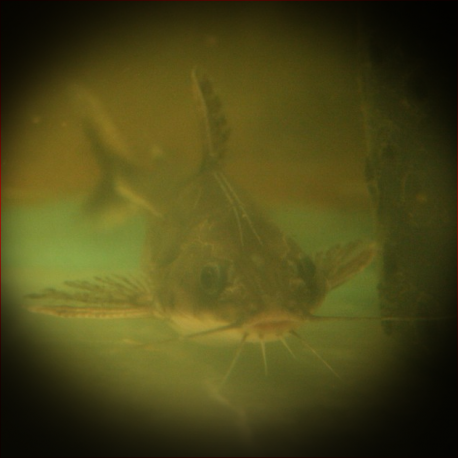More info
Datasheet
| Minimum Tank Size | 115 litres / 30.38 US gallons |
| Maximum Size | 11.5cm / 4.53inches |
| Temperature | 22°C / 71.60°F - 26°C / 78.80°F |
| Hardness | 4.03dgH / 72ppm - 25.04dgH / 447ppm |
| pH | 6.0-7.5 |
General Description
The Acanthodoras Cataphractus, commonly known as Chocolate Talking Catfish, is a species that belongs to the classification order Siluriformes. It is distinguished by its unique external features, such as pale blotches on the dorsal surface between the dorsal and caudal fins. This species, also referred to as spiny catfish, painted talking catfish, or chocolate raphael, is not commonly found in the aquarium trade and closely resembles A. spinosissimus.
Aquarium Setup
For optimal aquarium setup, a dimly-lit environment with a soft, sandy substrate and ample cover like aquatic plants, driftwood, or artificial caves is recommended. Bright lighting should be avoided as these catfish are primarily nocturnal. The water conditions should be maintained with a pH range of 6.0-7.5, a temperature between 22-26°C, and a hardness of 72-447ppm (see table).
Behaviour
Known to be non-aggressive, the Acanthodoras Cataphractus can consume very small fishes as adults. These catfish exhibit gregarious behavior, forming groups of at least four individuals. They are compatible additions to medium-to-large-sized community aquariums consisting of peaceful Amazonian species like characins, cichlids, and other catfish. They tend to group together with similar-looking relatives such as Platydoras armatulus, Agamyxis pectinifrons, and Amblydoras hancockii.
Feeding and Diet
The Chocolate Talking Catfish is an omnivorous species that accepts a wide range of prepared and frozen foods. A diverse diet is recommended, including high-quality sinking pellets, live or frozen bloodworms, Tubifex, and mosquito larvae. Occasional earthworms can also be offered to provide additional protein.
Reproduction & Dimorphism
Limited information is available on the reproductive behavior of Acanthodoras Cataphractus. Reports suggest that they form pair bonds, with both male and female involved in egg deposition and post-spawning care. The incubation period is believed to last 4-5 days. Mature females are typically fuller-bodied compared to males.
Habitat and Distribution
These catfish are widespread throughout the northern Amazon basin in countries like Bolivia, Brazil, Peru, and Colombia. They are also found in Atlantic river drainages of Guyana, Suriname, and French Guiana, inhabiting slow-moving and standing waters, backwaters, freshwater swamps, and coastal mangroves. Acanthodoras Cataphractus is often observed sheltering among roots or submerged vegetation during the day and actively foraging at night. In their natural habitat, they coexist with various other species, including those commonly available in the aquarium trade.

